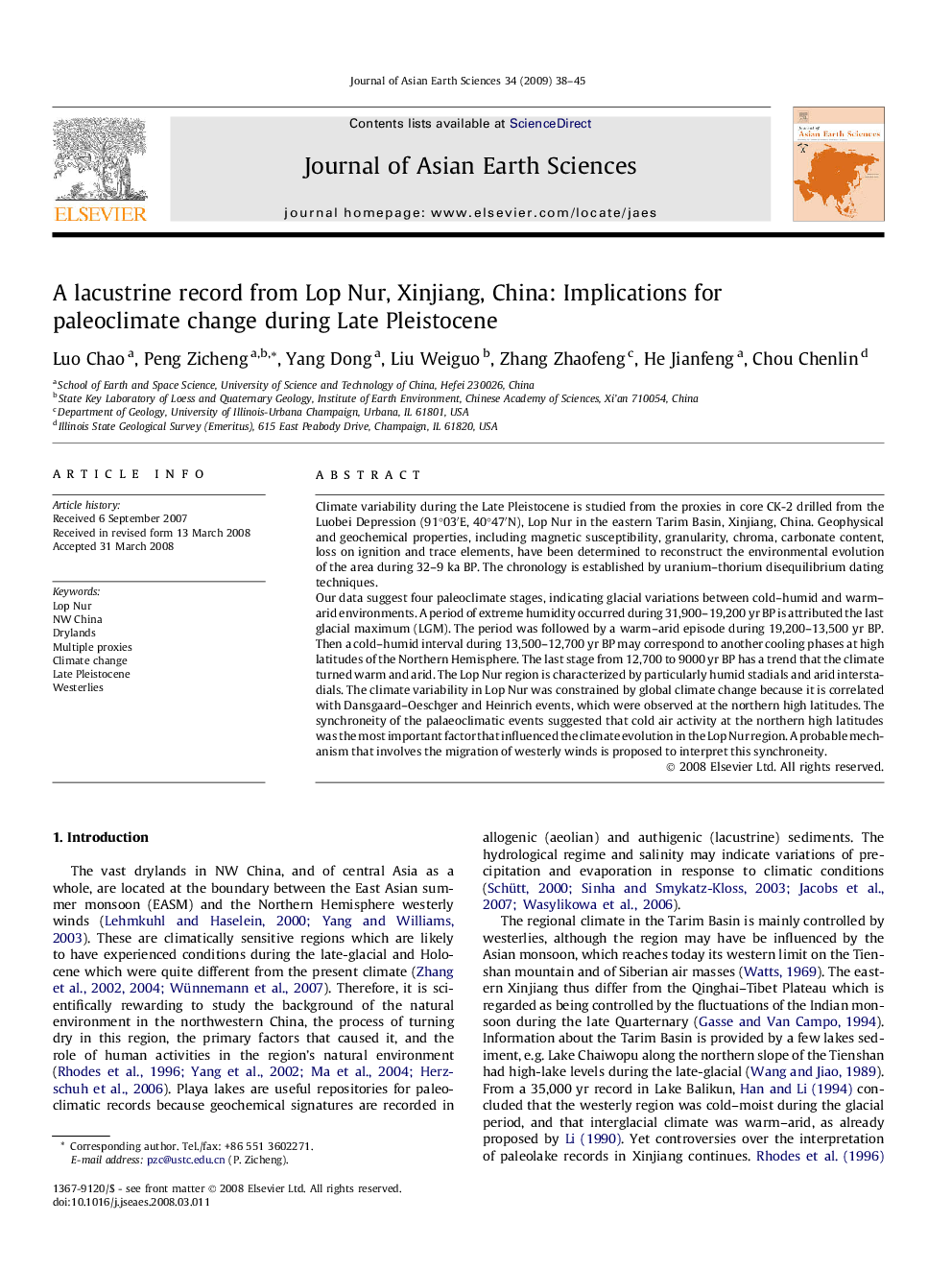| Article ID | Journal | Published Year | Pages | File Type |
|---|---|---|---|---|
| 4732217 | Journal of Asian Earth Sciences | 2009 | 8 Pages |
Climate variability during the Late Pleistocene is studied from the proxies in core CK-2 drilled from the Luobei Depression (91°03′E, 40°47′N), Lop Nur in the eastern Tarim Basin, Xinjiang, China. Geophysical and geochemical properties, including magnetic susceptibility, granularity, chroma, carbonate content, loss on ignition and trace elements, have been determined to reconstruct the environmental evolution of the area during 32–9 ka BP. The chronology is established by uranium–thorium disequilibrium dating techniques.Our data suggest four paleoclimate stages, indicating glacial variations between cold–humid and warm–arid environments. A period of extreme humidity occurred during 31,900–19,200 yr BP is attributed the last glacial maximum (LGM). The period was followed by a warm–arid episode during 19,200–13,500 yr BP. Then a cold–humid interval during 13,500–12,700 yr BP may correspond to another cooling phases at high latitudes of the Northern Hemisphere. The last stage from 12,700 to 9000 yr BP has a trend that the climate turned warm and arid. The Lop Nur region is characterized by particularly humid stadials and arid interstadials. The climate variability in Lop Nur was constrained by global climate change because it is correlated with Dansgaard–Oeschger and Heinrich events, which were observed at the northern high latitudes. The synchroneity of the palaeoclimatic events suggested that cold air activity at the northern high latitudes was the most important factor that influenced the climate evolution in the Lop Nur region. A probable mechanism that involves the migration of westerly winds is proposed to interpret this synchroneity.
